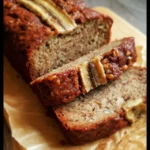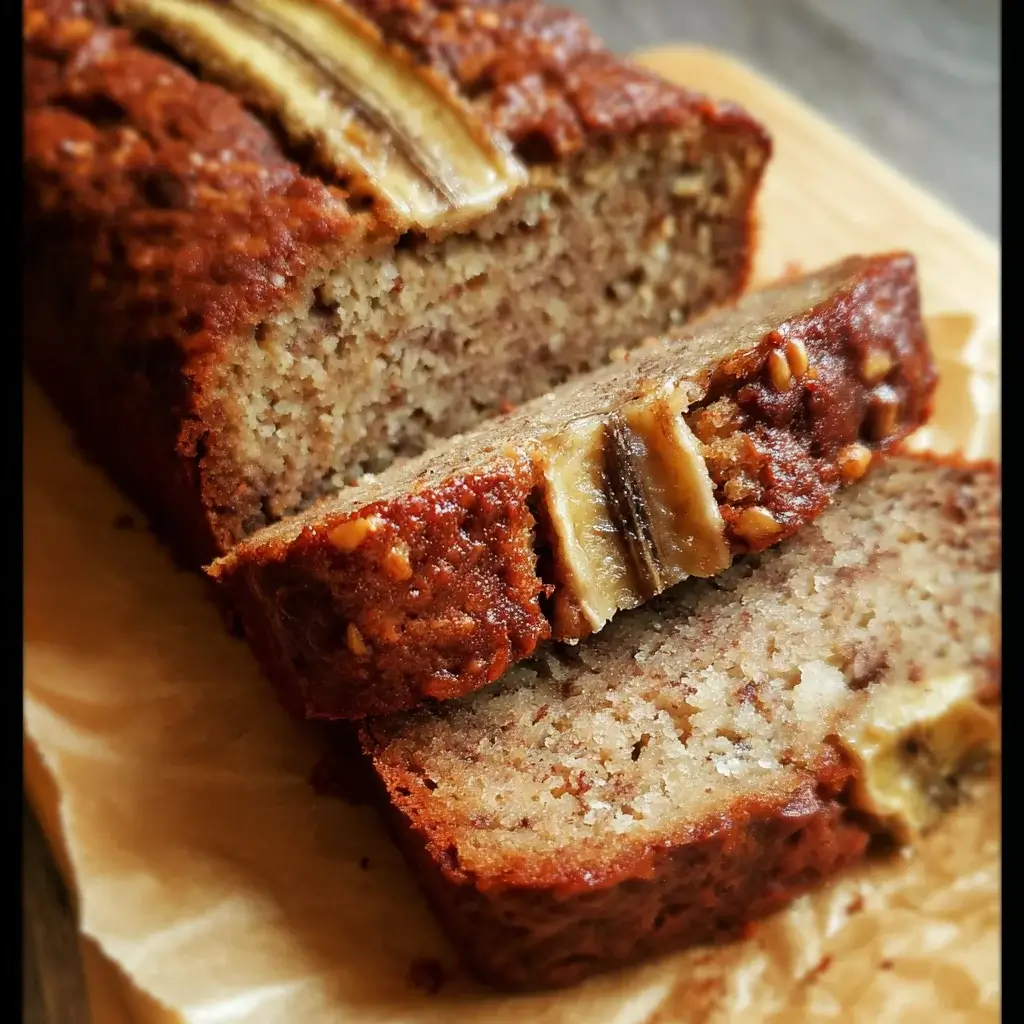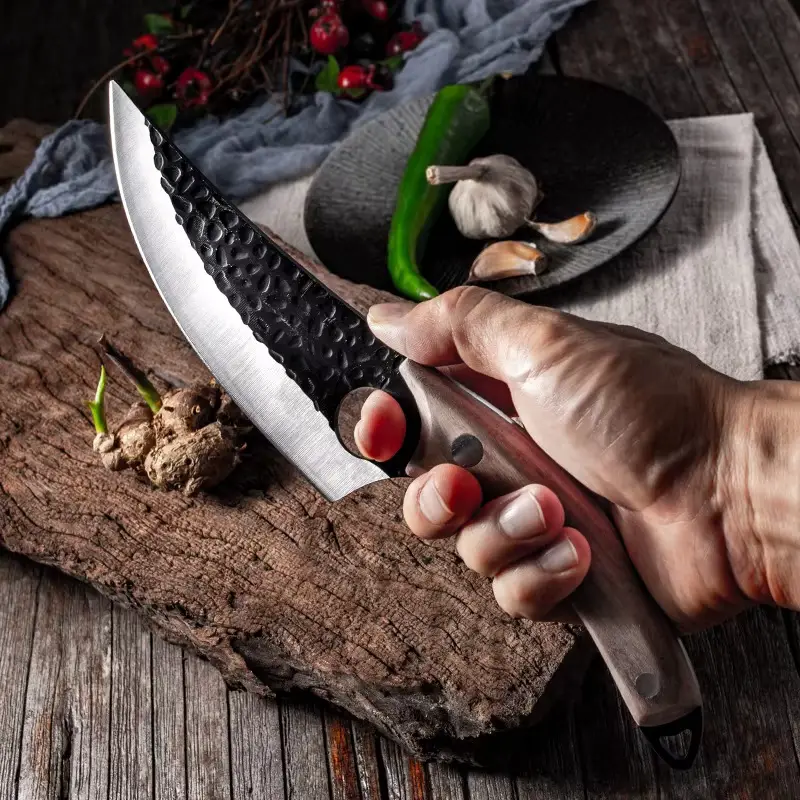Of all the comforting aromas that can fill a home, the scent of freshly baked banana bread is near the top of my list. For years, it was my go-to recipe for using up overripe bananas, a sweet, moist treat that signified comfort and nostalgia. When I transitioned to a low-carb lifestyle, I mourned the loss of certain foods, but banana bread hit differently. It felt like saying goodbye to a piece of my culinary heritage. The very essence of the bread—sugar and bananas—was the enemy of my new diet. For a long time, I resigned myself to a life without it. Then, through a bit of kitchen science and a lot of trial and error, this recipe was born. The first time I pulled this loaf from the oven, I was deeply skeptical. It smelled right, it looked right, but could it possibly taste right without the key ingredients? I let it cool, sliced a piece, and took a tentative bite. It was a moment of pure, unadulterated joy. The crumb was unbelievably moist, the flavor was sweet and distinctly “banana-y,” and there was none of the gritty texture or strange aftertaste I associated with some low-carb baked goods. My family, not on a low-carb diet, couldn’t tell the difference. This Low-Carb Banana Bread is not a compromise; it’s a triumph, a way to reclaim a beloved comfort food without derailing your health goals.
The Low-Carb Banana Bread Paradox: How is This Possible?
Before we dive into the recipe, let’s address the elephant in the room: How can you make “banana” bread that’s low in carbs when a single medium banana contains over 25 grams of carbohydrates, mostly from sugar? The answer lies in a clever combination of food science and ingredient substitution that mimics the flavor and texture of the real thing with remarkable accuracy.
- Capturing the Flavor without the Carbs: The primary secret weapon here is banana extract. A high-quality, natural banana extract provides the unmistakable aroma and taste of bananas without adding a single carb. It’s the key to tricking your senses into believing you’re eating the classic version. We use a generous amount to ensure the flavor is front and center.
- Creating the Perfect Crumb and Moisture: Traditional banana bread gets its dense, moist texture from the mashed bananas and all-purpose flour. To replicate this, we use a carefully balanced blend of low-carb flours and moisture-rich ingredients.
- Almond Flour: This is the base of our bread. Made from finely ground blanched almonds, it’s low in carbs, high in healthy fats and protein, and provides a wonderfully moist, tender crumb.
- Coconut Flour: We add a small amount of coconut flour because it is incredibly absorbent. It helps to soak up excess moisture and provides structure, preventing the bread from becoming too dense or oily, a common issue in almond flour-only recipes.
- Sour Cream & Butter: These full-fat ingredients are crucial. They provide the necessary fat content to ensure a rich, moist loaf that doesn’t taste “healthy” or dry. The tang from the sour cream also adds a subtle complexity that balances the sweetness.
- Sweetness Without the Sugar: To achieve that classic sweet taste, we use a zero-calorie, zero-carb sweetener like an erythritol or monk fruit blend. These sweeteners bake very similarly to sugar and don’t spike blood sugar levels, making them perfect for keto and low-carb diets.
By deconstructing the original and rebuilding it with these smart swaps, we can create a banana bread that is not only delicious but also perfectly aligned with a low-carb lifestyle.
A Deep Dive Into Our Low-Carb Baking Staples
Understanding the “why” behind each ingredient will make you a more confident low-carb baker. This isn’t just a recipe; it’s a lesson in a new kind of baking.
- The Flour Blend (Almond & Coconut): Think of these as a dynamic duo. Almond flour provides the bulk, richness, and moisture. Coconut flour acts as a sponge, providing structure and preventing the bread from being overly wet. You cannot substitute these flours 1:1 for each other or for regular flour. Their properties are unique, and this ratio has been tested for optimal results.
- The Binder (Xanthan Gum): In traditional baking, gluten (from wheat flour) provides elasticity and structure, holding everything together. Since our flours are gluten-free, we need a replacement. Xanthan gum is a natural thickener and stabilizer that mimics the binding properties of gluten, preventing your banana bread from being a crumbly mess. It’s a non-negotiable ingredient in most keto and gluten-free baking.
- The Leavening Agents (Baking Powder & Baking Soda): Just like in regular baking, these are essential for lift. Baking powder provides the primary lift, while baking soda reacts with the acidic sour cream to create extra rise and tenderness. Make sure your leavening agents are fresh for the best results.
- The Fats (Butter & Sour Cream): Fat equals flavor and moisture, especially in low-carb baking. We use unsalted butter for its rich flavor and full-fat sour cream for its moisture and tang. You could also substitute full-fat Greek yogurt for the sour cream in a pinch.
- The Sweetener (Granulated Erythritol/Monk Fruit Blend): These are sugar alcohols that pass through the body undigested, so they don’t impact blood glucose. Brands like Lakanto or Swerve are popular choices. They measure 1:1 like sugar, making them easy to use in recipes.
Complete Ingredients for Low-Carb Banana Bread
This recipe yields one 9×5 inch loaf. Always use room temperature ingredients for the best results.
Dry Ingredients:
- Fine Blanched Almond Flour: 1 ¾ cups
- Coconut Flour: ½ cup
- Granulated Erythritol/Monk Fruit Sweetener: ¾ cup (or up to 1 cup for a sweeter bread)
- Baking Powder: 2 teaspoons
- Xanthan Gum: 1 teaspoon
- Ground Cinnamon: 1 teaspoon
- Salt: ½ teaspoon
- Baking Soda: ½ teaspoon
Wet Ingredients:
- Unsalted Butter: ½ cup (1 stick), melted and slightly cooled
- Large Eggs: 4, at room temperature
- Full-Fat Sour Cream: ½ cup, at room temperature
- Banana Extract: 2 teaspoons (use a good quality one!)
- Vanilla Extract: 1 teaspoon
Optional Add-Ins:
- Chopped Walnuts or Pecans: ½ cup
- Sugar-Free Chocolate Chips: ½ cup (like Lily’s brand)
Step-by-Step Instructions to Baking Perfection
Follow these instructions carefully. The techniques in low-carb baking are slightly different but crucial for success.
Step 1: Preheat and Prepare
Preheat your oven to 350°F (175°C). Grease a 9×5 inch loaf pan thoroughly with butter or cooking spray. Line the pan with parchment paper, leaving an overhang on the two long sides. This will act as a sling, making it easy to lift the bread out of the pan later.
Step 2: Combine the Dry Ingredients
In a large bowl, whisk together the almond flour, coconut flour, granulated sweetener, baking powder, xanthan gum, cinnamon, salt, and baking soda. Whisking is important as it breaks up any clumps and ensures the leavening agents and xanthan gum are evenly distributed throughout the flour blend. Set aside.
Step 3: Combine the Wet Ingredients
In a separate medium bowl, whisk the 4 room-temperature eggs until they are frothy. Add the melted and cooled butter, sour cream, banana extract, and vanilla extract. Whisk until everything is smooth and well combined.
Step 4: Marry the Wet and Dry
Pour the wet ingredients into the bowl of dry ingredients. Using a spatula, fold the ingredients together until they are just combined. Do not overmix! Overmixing can lead to a dense or gummy bread. The batter will be very thick, much thicker than a traditional banana bread batter. This is normal.
Step 5: Add Optional Mix-Ins
If you are using walnuts, pecans, or sugar-free chocolate chips, gently fold them into the batter now.
Step 6: Bake the Bread
Spoon the thick batter into your prepared loaf pan and use your spatula to spread it evenly. Bake on the center rack of your preheated oven for 50-60 minutes. The bread is done when it is golden brown and a toothpick or cake tester inserted into the center comes out clean or with moist crumbs attached (but no wet batter). If you notice the top is browning too quickly, you can loosely tent it with a piece of aluminum foil for the last 15-20 minutes of baking.
Step 7: The Crucial Cooling Period
This is one of the most important steps. Remove the loaf pan from the oven and place it on a wire cooling rack. Let the bread cool completely in the pan for at least 1 hour. Low-carb baked goods are very delicate when warm and need this time to set up. Attempting to remove it too early will cause it to fall apart. After an hour, use the parchment paper sling to lift the bread out of the pan and let it finish cooling completely on the wire rack before slicing.
Nutrition Facts
- Servings: 12 slices
- Calories per serving: Approximately 220 kcal
- Net Carbs per serving: Approximately 4g (Net Carbs = Total Carbs – Fiber – Sugar Alcohols)
(This is an estimate and can vary based on the specific brands of ingredients and optional add-ins used.)
Preparation & Cook Time
- Preparation Time: 15 minutes
- Cook Time: 50-60 minutes
- Cooling Time: 1.5 – 2 hours
- Total Time: Approximately 3 hours
How to Serve and Enjoy Your Guilt-Free Banana Bread
This bread is fantastic on its own, but here are a few ways to elevate the experience:
- The Classic: Serve a warm slice slathered with a generous pat of salted butter. The butter will melt into the bread, creating an irresistible treat.
- Toasted with a Tang: Toast a slice until the edges are crispy and spread it with full-fat cream cheese for a breakfast that feels like a decadent indulgence.
- French Toast Style: This bread makes incredible low-carb French toast! Whisk an egg with a splash of heavy cream and cinnamon, dip the slices, and pan-fry in butter until golden brown. Serve with keto-friendly syrup.
- Dessert Parfait: Crumble a slice into a glass and layer it with sugar-free whipped cream and a few fresh berries (like raspberries or blueberries) for a beautiful and delicious dessert.
- With a Nutty Drizzle: Gently warm up a tablespoon of your favorite sugar-free nut butter (like almond or pecan butter) and drizzle it over a slice for extra flavor and healthy fats.
5 Essential Tips for Flawless Low-Carb Baking
- Measure Your Flours Correctly: Do not scoop the measuring cup directly into the bag of almond or coconut flour. This compacts the flour and will result in a dry, dense final product. Instead, use the “spoon and level” method: spoon the flour into your measuring cup until it is overflowing, then use the back of a knife to level it off. For ultimate accuracy, use a kitchen scale.
- Room Temperature Ingredients are a Must: This is not a suggestion; it’s a rule for good baking. Room temperature eggs and sour cream will emulsify with the fats much more easily, creating a smoother batter and a more uniform texture in your finished bread. Cold ingredients can cause the melted butter to seize up, resulting in a lumpy batter.
- Don’t Be Afraid to Tent It: Almond flour browns more quickly than regular flour. Keep an eye on your bread. If the top is getting dark but the center is still wet, loosely cover the pan with aluminum foil. This deflects the direct heat from the top, allowing the center to finish cooking without the exterior burning.
- Patience During Cooling is Key: I cannot stress this enough. You must let the bread cool completely. The internal structure needs time to set as it cools. If you slice into it while it’s still warm, it will be very crumbly and may seem under-baked, even if it’s not.
- Store it Properly for Lasting Freshness: Because this bread is so moist and contains no preservatives, it should not be stored at room temperature for more than a day. For best results, store it in an airtight container in the refrigerator for up to a week. It also freezes beautifully. Slice the completely cooled loaf, wrap individual slices in plastic wrap, and place them in a freezer-safe bag for up to 3 months. You can pull out a slice and toast it from frozen whenever a craving strikes.
Frequently Asked Questions (FAQ)
1. Can I add a real banana for more authentic flavor and texture?
You can, but you must be aware that it will significantly increase the carb count. If you want to, you can add ¼ to ½ of a very ripe, mashed banana to the wet ingredients. This will add moisture and a more authentic texture. A half-banana will add approximately 12-14 grams of carbs to the entire loaf, or about 1g extra per slice. For strict keto, it’s best to stick with just the extract.
2. My bread turned out dry. What went wrong?
The most common culprits for dry low-carb bread are inaccurate flour measurement (too much coconut flour, which is super absorbent) or over-baking. Make sure you are using the spoon and level method for measuring and start checking for doneness at the 50-minute mark. Also, ensure you used full-fat sour cream and not a low-fat version.
3. Why is my banana bread gummy or eggy?
A gummy texture is usually a sign of over-mixing the batter. Mix only until the wet and dry ingredients are just combined. An “eggy” taste can sometimes happen in keto baking. Ensure you are using high-quality, fresh eggs and good quality extracts, as this can help mask any potential eggy flavor. Letting the bread cool completely also helps to mellow out the flavors.
4. Can I substitute the almond flour or coconut flour?
Unfortunately, no. Low-carb flours have very unique properties and are not interchangeable with each other or with other types of flour (like oat or all-purpose). The ratio in this recipe is specifically designed to balance the moisture-absorbing properties of coconut flour with the rich, tender crumb of almond flour. Changing it will drastically alter the outcome.
5. I don’t have xanthan gum. Can I leave it out?
You can, but the bread will be extremely crumbly and will not hold together well when sliced. Xanthan gum is the “glue” in gluten-free baking. If you absolutely cannot use it, you can try substituting 2 tablespoons of ground psyllium husk, but it may slightly alter the texture and color of the bread. For best results, use the xanthan gum.

Low Carb Banana Bread recipe
Ingredients
Dry Ingredients:
-
Fine Blanched Almond Flour: 1 ¾ cups
-
Coconut Flour: ½ cup
-
Granulated Erythritol/Monk Fruit Sweetener: ¾ cup (or up to 1 cup for a sweeter bread)
-
Baking Powder: 2 teaspoons
-
Xanthan Gum: 1 teaspoon
-
Ground Cinnamon: 1 teaspoon
-
Salt: ½ teaspoon
-
Baking Soda: ½ teaspoon
Wet Ingredients:
-
Unsalted Butter: ½ cup (1 stick), melted and slightly cooled
-
Large Eggs: 4, at room temperature
-
Full-Fat Sour Cream: ½ cup, at room temperature
-
Banana Extract: 2 teaspoons (use a good quality one!)
-
Vanilla Extract: 1 teaspoon
Optional Add-Ins:
-
Chopped Walnuts or Pecans: ½ cup
-
Sugar-Free Chocolate Chips: ½ cup (like Lily’s brand)
Instructions
Step 1: Preheat and Prepare
Preheat your oven to 350°F (175°C). Grease a 9×5 inch loaf pan thoroughly with butter or cooking spray. Line the pan with parchment paper, leaving an overhang on the two long sides. This will act as a sling, making it easy to lift the bread out of the pan later.
Step 2: Combine the Dry Ingredients
In a large bowl, whisk together the almond flour, coconut flour, granulated sweetener, baking powder, xanthan gum, cinnamon, salt, and baking soda. Whisking is important as it breaks up any clumps and ensures the leavening agents and xanthan gum are evenly distributed throughout the flour blend. Set aside.
Step 3: Combine the Wet Ingredients
In a separate medium bowl, whisk the 4 room-temperature eggs until they are frothy. Add the melted and cooled butter, sour cream, banana extract, and vanilla extract. Whisk until everything is smooth and well combined.
Step 4: Marry the Wet and Dry
Pour the wet ingredients into the bowl of dry ingredients. Using a spatula, fold the ingredients together until they are just combined. Do not overmix! Overmixing can lead to a dense or gummy bread. The batter will be very thick, much thicker than a traditional banana bread batter. This is normal.
Step 5: Add Optional Mix-Ins
If you are using walnuts, pecans, or sugar-free chocolate chips, gently fold them into the batter now.
Step 6: Bake the Bread
Spoon the thick batter into your prepared loaf pan and use your spatula to spread it evenly. Bake on the center rack of your preheated oven for 50-60 minutes. The bread is done when it is golden brown and a toothpick or cake tester inserted into the center comes out clean or with moist crumbs attached (but no wet batter). If you notice the top is browning too quickly, you can loosely tent it with a piece of aluminum foil for the last 15-20 minutes of baking.
Step 7: The Crucial Cooling Period
This is one of the most important steps. Remove the loaf pan from the oven and place it on a wire cooling rack. Let the bread cool completely in the pan for at least 1 hour. Low-carb baked goods are very delicate when warm and need this time to set up. Attempting to remove it too early will cause it to fall apart. After an hour, use the parchment paper sling to lift the bread out of the pan and let it finish cooling completely on the wire rack before slicing.
Nutrition
- Serving Size: one normal portion
- Calories: 220 kcal
- Carbohydrates: 4g






